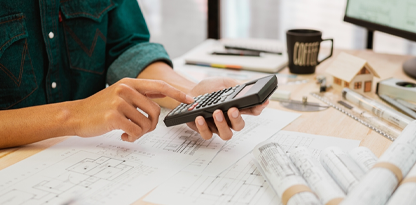Accurate Flooring Estimating Services for Contractors and Builders
- Sadiqa Bibi
- Oct 3
- 4 min read

In the construction industry, accurate cost estimation plays a vital role in the success of any project. Flooring, being a critical component of both residential and commercial structures, requires precise planning and budgeting to ensure quality results without overspending. Accurate flooring estimating services help contractors and builders manage costs effectively, streamline project workflows, and avoid financial setbacks.
This article explores the importance of flooring estimating services, how they enhance project planning, and why hiring professional services can be a game-changer for contractors and builders.
Why Flooring Estimation Matters
Flooring is more than just a surface to walk on; it contributes to the aesthetic appeal, durability, and functionality of a space. Mistakes in flooring estimation can lead to:
Budget Overruns: Incorrect material calculations can result in purchasing either excess or insufficient flooring materials, increasing project costs.
Project Delays: Delays in acquiring additional materials or redoing incorrectly installed flooring can slow down timelines.
Reduced Profit Margins: Contractors who fail to estimate flooring costs accurately may lose potential profits due to unforeseen expenses.
Accurate flooring estimates help prevent these challenges by providing a clear understanding of material requirements, labor costs, and project timelines.
Key Components of Flooring Estimation
To provide a precise estimate, flooring professionals consider multiple factors, including:
1. Material Selection
Different flooring materials come with varying costs, durability, and installation requirements. Common flooring types include:
Hardwood: Offers premium aesthetics but requires higher investment and skilled installation.
Laminate: A cost-effective alternative that mimics wood appearance but is easier to maintain.
Vinyl: Durable and waterproof, ideal for high-traffic or moisture-prone areas.
Tile: Ceramic or porcelain tiles are ideal for kitchens and bathrooms due to durability and water resistance.
Carpet: Adds warmth and comfort, typically requiring padding and proper installation for longevity.
Accurate estimation ensures the right quantity of each material is procured, reducing waste and unnecessary costs.
2. Labor Costs
Installation costs vary depending on flooring type, room size, and labor complexity. Professionals consider:
Surface preparation (leveling, cleaning, moisture testing)
Installation method (floating, glue-down, nail-down, or interlocking systems)
Finishing touches (edging, baseboards, and transitions between rooms)
Correct labor cost estimation prevents unexpected overruns and ensures fair compensation for workers.
3. Project Scope
Accurate flooring estimation begins with assessing the complete project scope. This includes:
Room dimensions and layouts
Flooring patterns or designs
Areas requiring special treatment, such as staircases, thresholds, or corners
A detailed scope reduces errors and ensures that contractors can plan resources efficiently.
4. Waste Factor
Even the most carefully planned flooring projects generate some waste due to cutting, fitting, and off-cuts. A standard waste factor (typically 5-10%) is added to ensure sufficient material coverage without overspending.
5. Additional Costs
Other costs considered in flooring estimates may include:
Adhesives and underlayment
Tools and equipment rental
Delivery charges
Contingencies for damage or unforeseen issues
Including these factors ensures a comprehensive estimate and avoids surprises during execution.
Benefits of Hiring Professional Flooring Estimating Services
While contractors can attempt flooring estimation themselves, professional estimating services offer significant advantages:
1. Precision and Accuracy
Professional estimators use advanced software and industry knowledge to calculate material, labor, and project costs with high accuracy. This reduces the risk of overbuying or underestimating materials.
2. Time Efficiency
Estimating flooring costs manually can be time-consuming. Professional services provide quick, reliable estimates, allowing contractors to focus on project execution rather than calculations.
3. Cost Savings
Accurate estimates minimize material waste and prevent labor inefficiencies, directly contributing to cost savings. Contractors can also negotiate better deals with suppliers when they have precise requirements.
4. Enhanced Client Confidence
Clients trust contractors who provide clear, detailed estimates. Professional flooring estimates demonstrate transparency, professionalism, and commitment to delivering high-quality results.
5. Project Planning and Management
Accurate estimates are essential for scheduling, resource allocation, and managing project milestones. They allow contractors to plan effectively, avoid delays, and ensure smooth project execution.
Flooring Estimation Techniques
Professional flooring estimators use a combination of methods and tools to deliver precise results:
1. Manual Estimation
For smaller projects, manual calculations based on room dimensions and material specifications can be effective. Estimators measure square footage, calculate required material quantities, and add labor and waste factors.
2. Software-Based Estimation
Advanced estimation software allows contractors to input project details, select materials, and automatically calculate costs. Some software also generates detailed reports, including labor and material breakdowns, helping with budgeting and project management.
3. Consultation with Suppliers
Professional estimators often liaise with suppliers to get accurate material pricing and availability. This ensures estimates are aligned with market rates and prevents delays due to stock shortages.
Challenges in Flooring Estimation
Despite the availability of tools and expertise, flooring estimation can face challenges:
Complex Room Layouts: Irregular shapes, multiple levels, and unique patterns require precise calculations.
Material Variability: Differences in material quality, thickness, and finish can affect both cost and installation complexity.
Market Fluctuations: Price changes in raw materials can impact final project costs.
Unexpected Site Conditions: Moisture issues, subfloor damage, or structural irregularities may require adjustments to estimates.
Professional estimating services mitigate these challenges by combining experience, advanced tools, and market knowledge.
How Contractors Can Benefit
Contractors who invest in professional flooring estimating services gain multiple advantages:
Improved Profit Margins: Accurate estimates ensure projects remain within budget, maximizing profits.
Reduced Stress: Estimators handle calculations and planning, freeing contractors to manage execution.
Better Client Relationships: Transparent and reliable estimates improve client trust and satisfaction.
Competitive Advantage: Contractors offering precise cost projections stand out in a competitive market.
Ultimately, accurate flooring estimation is not just about numbers—it’s about delivering high-quality results efficiently and cost-effectively.
Conclusion
Accurate flooring estimating services are an indispensable part of modern construction. They help contractors and builders manage budgets, streamline workflows, and deliver exceptional results. By considering materials, labor, project scope, waste factors, and additional costs, professional estimators ensure projects stay on track and within budget.
In a market where precision, reliability, and efficiency are critical, hiring professional flooring estimating services is a smart investment. Contractors can save time, reduce costs, enhance client confidence, and improve overall project success, making accurate flooring estimation a cornerstone of construction excellence.






Comments